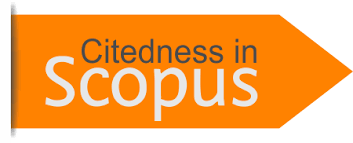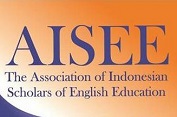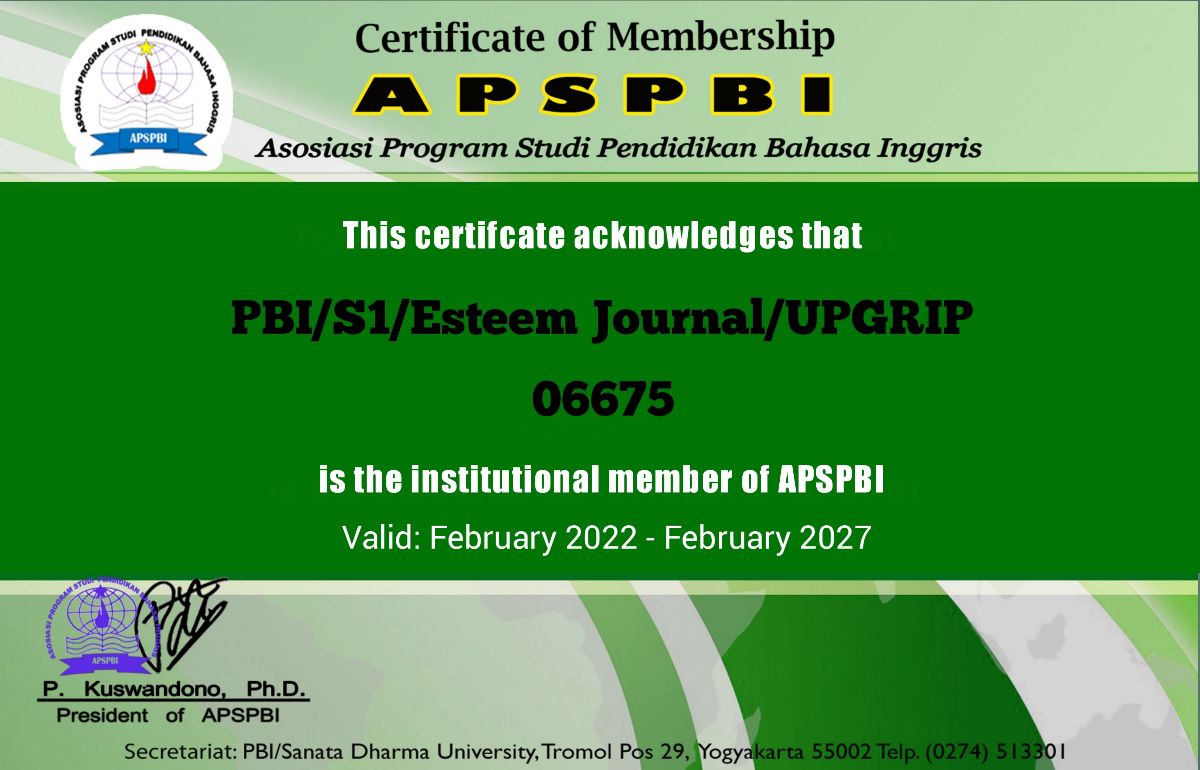THE INFLUENCE OF ROLE PLAY TECHNIQUE AND LEARNING MOTIVATION TOWARDS THE TENTH GRADE STUDENTS’ SPEAKING ABILITY
DOI:
https://doi.org/10.31851/esteem.v5i1.7289Keywords:
Speaking Ability, Role Play, Teaching MotivationAbstract
The purpose of this research is to find out the influence of role play technique and learning motivation towards the tenth grade students’ speaking ability at Mandiri vocational school of Palembang. To know students’ speaking ability in this study, students were assessed by oral test. The test was analyzed by using descriptive statistic, normality, homogeneity, pair sampled t-test, independent sample t-test and two way ANOVA. Based on the result on two way ANOVA by SPSS 22, the result showed that there was significant influence of role play towards the tenth grade students’ speaking ability, there was significant influence of using role play and conventional teaching technique towards the tenth grade students’ speaking ability between students who have high and low learning motivation at Mandiri Vocational school, there was interaction effect of role play and learning motivation towards the tenth grade students’ speaking ability. It can be concluded that role play technique was quite effective to improve students speaking achievement.          Â
References
Amelia. (2010). The Effect of Role Play Technique guided by Video CD and The Students’ Motivation Toward Students’ Speaking Ability at SMA Patra Mandiri 2 Palembang. Palembang: University of PGRI.
Amberg Julie and Deborah J. Vause. 2010. Language in Society. Cambridge University Press.
Ardiansyah, F. & Jaya, A. (2020). Extending the Students’ Narrative Text through Reading SMART Protocol. ESTEEM Journal of English Study Programme. Vol 3 (1) DOI. 10.31851/esteem.v3i1.4727.
Avon, Terry. (1998). How You Get Students to Communicate. SIIT, Bangkok.
Budden. (2006). Role Play in Upper Primary Clauses Brno.University Brno.
Brown, H.D. (2000). Principles of Language Learning and Teaching. San Francisco: State University.
Brown, H. D. (2004). Language Assessment Principles and Classroom Practice. SanFrancisco: State University.
Brown, Douglas. (2004). Language Assessment Principles and Classroom Practices. New York: Pearson Education, Inc.
Brown, Douglas. (2001). Teaching by Principles (An Interactive Approach to Language Pedagogy). New York: Longman.
Brown, Douglas. (2007). Teaching by Principles (An Interactive Approach to Language Pedagogy). Second Edition. Longman.
Coney, R, & Kanel, S. (1998). Opening the World of Literature to Children Through Interactive Drama Experiences. Paper Presented at Annual International Conferences and Exhibitions of the Association for Childhood Education. Portland, OR: Institute of Education Science.
Domyei, Z, and Thurrell, S. (1992). Conversation and Dialogues in ActionSydney: Prentice - Hall.
Firmansyah, (2010). Improving Students Speaking Ability Through Communicative Language Teaching at MAN Muara Enim Palembang: University of PGRI.
Frankel J.R, Wallen, N. E, and Hyun, H. Helen. (2012). How to Design and Evaluate Research. New York: Mc. Graw Hill.
Genc, Gulten & Aydin, S. (2010). Students’ Motivation Towards Computer Use in EFL Leaming. Turkey: IETC.
Gradler, M.E. (2001). Leaming and Instruction: Theory into Practice (4 ed).Upper Saddle River, NJ: Practice Hall, Inc.
Harmer, Jaremy. (2000). Language Learning and Teaching: Issues and Education. England: Pearson Education Limited.
Hatch, Evenlin and HosseinFarhady. (1991). How to Design and Statistics for Applied Linguistics. Cambridge: Newbury House Publisher, Inc.
Kubiszyn,T.and Borich, G. (2007). Education Tasting and Measurement: Classroom Application and Practice (8th ed). New York: Harper.
Kayi, Hayriye. (2006) Teaching Speaking: Activities to Promote Speaking in a Second Language. The Internet TESL Journal XII.
Kimtafsirah, Y.M. (2003). Oral Communication for Trainers of EFLN. How to Master and Teach it. Jakarta: Departement of National Education, Directorate General of Primary and Secondary Education, Center of Language TeacherTraining and Development.
Klippel Friederike. (1991). Communicative Fluency Activities for Language Teaching. Cambridge University Press
Lodousse, G., P. (2004). Role Play. Oxford: Oxford University Press. Retrieved.
Olgren, C. (1998). Generating Motivation tp Learn English Can be AchievedThrough Inruction Design and Teaching Camridge. CambridgeUniversity Press.
Pradiska, Esty Dwi. (2016). The Influence of Collaborative Technique, Traditional Method. Palembang, University of PGRI.
Richards,J.C. (2006). Communicative Language Teaching Today. Cambridge: Cambridge University Press.
Simaibang, Baginda.(2017).English Language Teaching in a Foreign Situation. Second Edition. Palembang: Citra Books Indonesia.
Sugiyono. (2010). Metode Penelitian Kuantitatif Kualitatif dan R&D. Bandung: Alfabeta.
Scrivener, Jim. (1998). Learning Teaching the Essential Guide to English Language Teaching. Macmillan: United Kingdom.
Tornbury, S. (2005). How to Teach Speaking. Harlow: Pearson Education, Ltd.
Ur, Penny. (1996). A Course in Language Teaching Practice and Theory. Britain: Cambridge University Press.
Wang, P. (2009). The Inter-Rater Reliability in Scoring Composition.Journal of English Language Teaching, Vol. 2, Issue in September.
Watcy-Jones and Howard- Williams. (2002). Grammar Games and Activities. London: Pinguins English Photocopiables.
Wenjie, Cai. (2009). Using Communicative Lanuage Teaching (CLT) to Improve Spaking Ability of Chinese Non-English Major Students. Published Graduate Thesis. University of Wisconsin-Platteville.
Retrieved from: htt:/www.tesol.org/s tesol/see document. Asp? CID=948. Accessed on April 30,2012.
https://www.sekolahbahasainggris.co.id/contoh-lesson-plan-about-role-play-untuk-sma-kelas-2-dalam-bahasa-inggris/
Downloads
Published
Issue
Section
License
Copyright Notice
Authors who publish with this journal agree to the following terms:
In order to assure the highest standards for published articles, a peer review policy is applied. In pursue of the compliance with academic standards, all parties involved in the publishing process (the authors, the editors and the editorial board and the reviewers) agree to meet the responsibilities stated below in accordance to the Journal publication ethics and malpractice statement.
Duties of Authors:
- The author(s) warrant that the submitted article is an original work, which has not been previously published, and that they have obtained an agreement from any co-author(s) prior to the manuscript’s submission;
- The author(s) should not submit articles describing essentially the same research to more than one journal;
- The authors(s) make certain that the manuscript meets the terms of the Manuscript Submission Guideline regarding appropriate academic citation and that no copyright infringement occurs;
- The authors(s) should inform the editors about any conflict of interests and report any errors they subsequently, discover in their manuscript.
Duties of Editors and the Editorial Board:
- The editors, together with the editorial board, are responsible for deciding upon the publication or rejection of the submitted manuscripts based only on their originality, significance, and relevance to the domains of the journal;
- The editors evaluate the manuscripts compliance with academic criteria, the domains of the journal and the guidelines;
- The editors must at all times respect the confidentiality of any information pertaining to the submitted manuscripts;
- The editors assign the review of each manuscript to two reviewers chosen according to their domains of expertise. The editors must take into account any conflict of interest reported by the authors and the reviewers.
- The editors must ensure that the comments and recommendations of the reviewers are sent to the author(s) in due time and that the manuscripts are returned to the editors, who take the final decision to publish them or not.
Authors are permitted and encouraged to post online a pre-publication manuscript (but not the Publisher final formatted PDF version of the Work) in institutional repositories or on their Websites prior to and during the submission process, as it can lead to productive exchanges, as well as earlier and greater citation of published work (see The Effect of Open Access). Any such posting made before acceptance and publication of the Work shall be updated upon publication to include a reference to the Publisher-assigned DOI (Digital Object Identifier) and a link to the online abstract for the final published Work in the Journal.





























